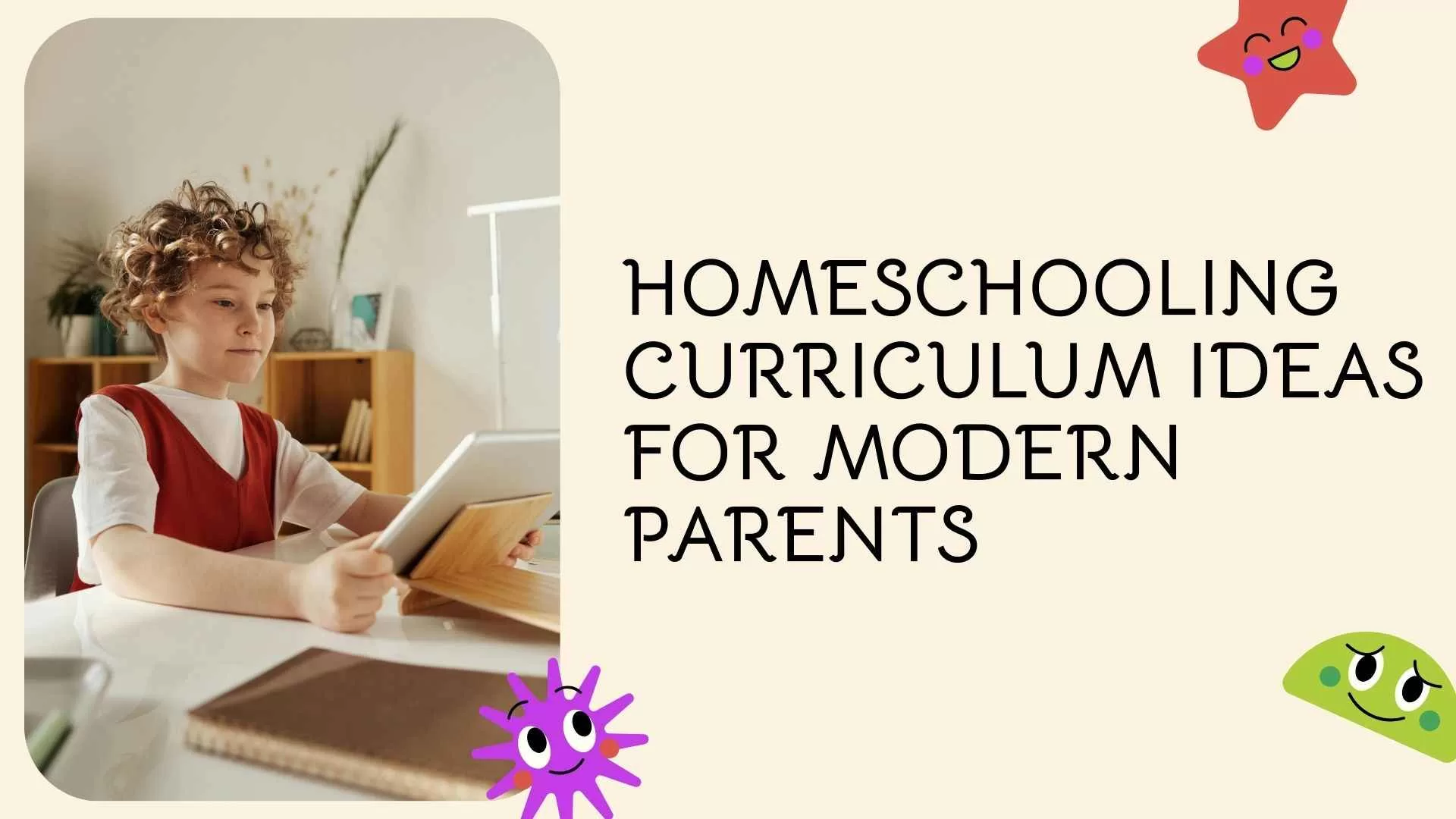Homeschooling now doesn’t look anything like what it did a decade ago, and for the fact that’s a good thing. Modern parents are willing to balance jobs, manage homes, and even try to raise emotionally healthy kids, all while navigating an educational landscape that keeps on shifting. Add in the comparison-factor social feeds and endless curriculum choices, and it’s no longer a surprise to see that homeschooling can feel overwhelming even before it begins.
But here’s a truth that most parents forget and don’t even realise, homeschooling isn’t supposed to replicate school, nor is it about having rough and tough schedules, expensive kits, or perfectly colour-matched planners. At its best, homeschooling is way too flexible and even more responsive to your child’s natural way of learning. This blog is exactly about reminding parents that a curriculum doesn’t have to be too complicated; it just has to make more sense for the family using it. And below, you will find some of the most realistic approach and ideas that supports modern lifestyles while keeping learning more engaging, intuitive, and stress-free.
Rethinking Homeschooling for the Modern Family
Usual schooling frameworks were only designed for structured classrooms, not homes where a toddler might be weeping in the next room, a video meeting that’s about to start in the next ten minutes, and your middle-schooler is in a mood. Home environments are wonderfully laid out, but they rarely ever go predictable, which makes factory-like modules even more impractical.
Kids also learn differently now; attention span varies, neurodiversity is better understood, and technology also plays a massive role in how children process information. A curriculum is made for a silent, uniform classroom, which simply doesn’t show how real learning takes place at home.
The Modern Homeschool Mindset
Parents who thrive with homeschooling do one thing fairly: they prioritise mastery, interest, and rhythm. Instead of forcing a tough structure, they embrace a flexible learning flow. Instead of treating a worksheet as evidence, they look for a real understanding. And instead of keeping up with the daily burdened tasks, they focus more on the engagement. Once you release the pressure to imitate traditional schooling, homeschooling becomes lighter, more intuitive, and far more enjoyable.
Core Subjects, Made Simple and Engaging
Language Arts Without the Boredom
Language arts don’t have to be another struggle with textbooks; kids absorb language best when it’s relevant. Let them pick the reading material, even if it’s graphic novels or magazines. Pair it up with readings and short discussions instead of long comprehension worksheets. Make the most out of storytelling games, journal prompts, or real-life writing tasks such as crafting emails, creating comic strips, or summarising a favourite show. When reading and writing become a part of natural conversation, literacy grows seamlessly.
Math That Feels Less Scary
One of the most feared subjects of all time, and one of those subjects in which fear usually comes from learning without context. A subject that takes a concept-first approach changes everything. Explaining visionary ideas with the help of household items such as measuring cups, coins, or even blocks! Additionally, apps to gamify practice and keep things quite engaging. Most importantly, integrate math into everyday life: Let kids calculate grocery budgets, double a recipe, measure a room, or plan a small savings goal. When math is woven into real decisions, kids stop resisting it.
Science Through Curiosity
When it begins with an investigation rather than a hypothesis, science becomes interesting. Anchor ideas using backyard observations, nature walks, and basic experiments. A kitchen can manage half the curriculum, volcano reactions, density tests, and freezing points. Instead of expecting textbook-style answers, match experiments with inquiries such as “Why did this happen?” Allow curiosity to thrive, and science starts to drive itself.
Social Studies That Feels Real
When social studies transcends dates and maps, it becomes more fascinating. Explore worldwide landscapes utilising Google Earth, cultural movies, and documentaries. Present history via narrative: biographical accounts, timelines, comics, and actual events. Start a dialogue on community, identity, and society. The subject becomes relevant when children view social studies as tales of people instead of a list of chapters.
Creative Curriculum Ideas That Bring Learning to Life
Project-Based Learning
The project gives an authorship and real-world purpose, it isn’t necessary to keep them prolonged, make them short or have a multi-week exploration. Ideas include designing a small business, creating a country with laws and currency, making a home garden plan, writing a storybook, or documenting a family history. Projects make learning collaborative and exciting.
Themed Weekly Learning
Choose a weekly topic, Space Week, Ancient Egypt Week, Weather Week, Entrepreneurship Week, and plan basic activities around it. Themes encourage students’ curiosity and lower planning anxiety for parents.
Skill-Based Learning
Modern kids need more than academic knowledge to get them introduced to real-life skills, such as cooking meals, coding essentials, sewing, money management, photography, DIY repairs, or even arts and crafts. Learning skills-based gives more confidence and independence.
Digital Tools That Make Homeschooling Easier (Without Overwhelm)
Apps That Simplify Learning
Having a small set of quality apps can save hours of stress, reading apps help kids practice comprehension, math apps turn practice into mental games, and science channels provide more experimental ideas. The key here is to use them intentionally and in the correct way, not to use them as a complete replacement, but as a support tool.
Tech for Organisation
It’s safe to say that homeschooling becomes smoother when having a simple digital system, timers help kids to stay focused, digital planners assist parents in organising the week, and the digital portfolios track progress in a more clean and visual way. Even having photos of finished work counts as evidence of growth.
Building a Homeschool Routine That Actually Works
The “Loose Structure, Strong Flow” Method
Having a tough timetable quickly falls apart at home; instead, build a daily flow that follows natural rhythms. Establish a consistent anchor, such as “morning reading” or “afternoon meditation”, while giving the maximum flexibility in time. This keeps the day orderly without becoming more stressful.
Balancing Academic and Real-Life Learning
What scares most of the students and early learners is the heavy learning, and at times, not every day needs to be so heavy. Some days focus on life skills, creativity, or exploration. Weekly learning goals help maintain direction without making daily pressure unbearable.
For Working Parents: What’s Truly Realistic
By integrating independent learning blocks, brief, high-focus lessons, and weekend learning, working parents excel with homeschooling. Children manage more self-led activities than expected when routines are clear.
Socialisation Without School Walls
Community & Group Learning
Socialisation in homeschooling is far more abundant than people think about it; local homeschool co-ops, workshops, library programs, and community groups create a consistent interaction.
Real-World Interaction
Natural social connections come from sports teams, volunteer work, cousins, neighbours, and extracurricular lessons. Socialisation calls the community, not a classroom.
Common Mistakes New Homeschool Parents Make (And How to Avoid Them)
Many parents make it harder on themselves, often unknowingly, to homeschool than it really needs to be, and the most significant mistake is trying to recreate school at home, with strict schedules, pages of worksheets, and overfilled days. Others wear themselves out because they try to buy into too many curriculum packages or push their child beyond their natural pace. Keep it simple, be responsive and adjust if something isn’t working!
A Stress-Free Approach to Choosing (or Creating) a Curriculum
Identify Your Child’s Learning Style First
At this stage, it’s important to know whether your child learns visually, through hands-on activity, through listening, or through having a hybrid approach that shapes everything, learning becomes easier once their style is better understood.
Start With What You Have
Great homeschooling begins with innovation, not with purchases. Strong learning experiences can be developed with home books, free online courses, documentaries, and actual domestic knowledge.
Build Slowly, Not All at Once
Take a slow approach; not everyone is made the same way to digest every subject at once. Introduce subjects gradually, test different methods, and safely say check what works and simply replace what doesn’t. The best ones evolve through real use.
When to Seek Help: Tutors, Online Support, and Supplemental Services
It is natural for some subjects to challenge youngsters more than others. External support—such as tutors, organised online lessons, writing help, or academic coaching—can ease tension for parent and child when annoyance increases. Rather than replacing the homeschool format, supplemental assistance improves learning.
Rethinking Success in a Homeschool World
We can conclude it by saying that the success ratio in homeschooling has nothing to do with how perfect lesson planning is or completing every single worksheet. It’s simply measured by confidence, curiosity, independence, and genuine understanding. When learning is more flexible and human, kids flourish. The most effective homeschooling curriculum is not the one that looks best on paper, but the one that fits your household, respects your child, and feels more sustainable for your family’s rhythm. Having the right mindset and a simple and thoughtful approach, homeschooling becomes less of a burden and more of a reward.
FAQs
How do I know if homeschooling is the appropriate fit for my child?
For children needing flexibility, individualized pacing, or fewer distractions, homeschooling is frequently a wonderful choice. The simplest approach to discover is by means of a brief trial time and watching how your child reacts.
Do I have to have a teaching background to create a solid homeschooling curriculum?
Modern homeschooling depends on direction, not knowledge, so it is not at all. Utilizing organized resources, community assistance, and non-teacher tools, parents only serve as enablers.
Can homeschooled kids still get ready for college or higher education?
Yes. Most colleges welcome homeschooled students, and many even value the self-direction they cultivate. The road remains wide open through regular record-keeping and age-appropriate instruction.
Preventing boredom or burnout during homeschooling requires me.
Combine academic instruction with hands-on activities, outside time, and artistic projects. Regular changes in activity type enable children to stay involved without being overloaded.
Should my kid pick up faster or slower than anticipated?
Homeschooling lets you change the pace at any moment. You can provide greater level challenges if a child moves quickly; if they need more time, you can slow down without consequences.
Can one homeschool and work full-time?
Yes, but filling the gaps demands a flexible framework: independent learning sessions, weekend classes, and digital tools. Many working parents effectively homeschool with the right routine.



